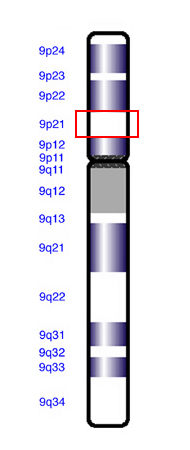Nearly 40% of inherited cases of ALS appear to be linked to repeat expansions in the C9ORF72 gene. To reduce the levels of these potentially toxic sequences, researchers are working hard to develop antisense oligonucletide-based strategies in hopes to treat this form of the disease. But the number of repeats that may trigger ALS remains unclear making the diagnosis especially challenging.
Ahead of the ALS Association and Association of FTD's C9ORF72 conference at SfN 2012, ALS Today takes a look back at the the most common cause of ALS identified to date in this interactive timeline. Roll over key advances to learn about ongoing efforts to diagnose and treat this form of the disease.
To find out more about SfN2012 and other meetings on our calendar, tune into our webinar on October 4, 2012.
Images: Courtesy of George Shuklin, Jonathan Charles, Nature Publishing Group, Oxford Journals and the National Cancer Institute.

On the map. Scientists zeroed in on an ALS-FTD gene located on the p arm of chromosome 9. Image:National Institute of Diabetes and Digestive and Kidney Diseases.
Update 10/29/12: Tune into our podcast with Johns Hopkins University School of Medicine neurologist Jeff Rothstein MD PhD to learn more about potential antisense treatment strategies for C9ORF72-linked ALS.
References
Morita, M. et al. (2006) A locus on chromosome 9p confers susceptibility to ALS and frontotemporal dementia. Neurology 66(6), 839-844. Abstract | Full Text (Subscription Required)
Vance, C. et al. (2006) Familial amyotrophic lateral sclerosis with frontotemporal dementia is linked to a locus on chromosome 9p13.2-21.3. Brain 129(4), 868-876. Abstract | Full Text
DeJesus-Hernandez, M. et al. (2011) Expanded GGGGCC hexanucleotide repeat in a noncoding region of C9ORF72 causes chromosome 9p-linked FTD and ALS Neuron 72(2), 245-256. Abstract | Full Text (Subscription Required)
Renton, A.E. et al. (2011) A hexanucleotide repeat expansion in C9ORF72 is the cause of chromosome 9p21-linked ALS-FTD. Neuron 72(2), 257-268. Abstract | Full Text (Subscription Required)
Byrne, S. et al. (2012) Cognitive and clinical characteristics of patients with amyotrophic lateral sclerosis carrying a C9orf72 repeat expansion: a population-based cohort study. Lancet Neurology 11(3), 232-240. Abstract | Full Text (Subscription Required)
Cooper-Knock, J. et al. (2012) Clinico-pathological features in amyotrophic lateral sclerosis with expansions in C9ORF72. Brain 135(3):751-64. Abstract | Full Text (Subscription Required)
Majounie, E. et al. (2012) Frequency of the C9orf72 hexanucleotide repeat expansion in patients with amyotrophic lateral sclerosis and frontotemporal dementia: a cross-sectional study. Lancet Neurology 11(4):323-30. Abstract | Full Text
Rutherford, N.J., Dejesus-Hernandez, M., Baker, M.C., Kryston, T.B., Brown, P.E., Lomen-Hoerth, C., Boylan, K., Wszolek, Z.K. and Rademakers, R. (2012) C9ORF72 hexanucleotide repeat expansions in patients with ALS from the Coriell Cell Repository. Neurology 79(5):482-483. Abstract | Full Text (Subscription Required)
Further Reading
Wheeler, T.M., Leger, A.J., Pandey, S.K., MacLeod, A.R., Nakamori, M., Cheng, S.H., Wentworth, B.M., Bennett, C.F. and Thornton, C.A. (2010). Targeting nuclear RNA for in vivo correction of myotonic dystrophy. Nature 488, 111-115. Abstract | Full Text (Subscription Required)